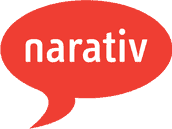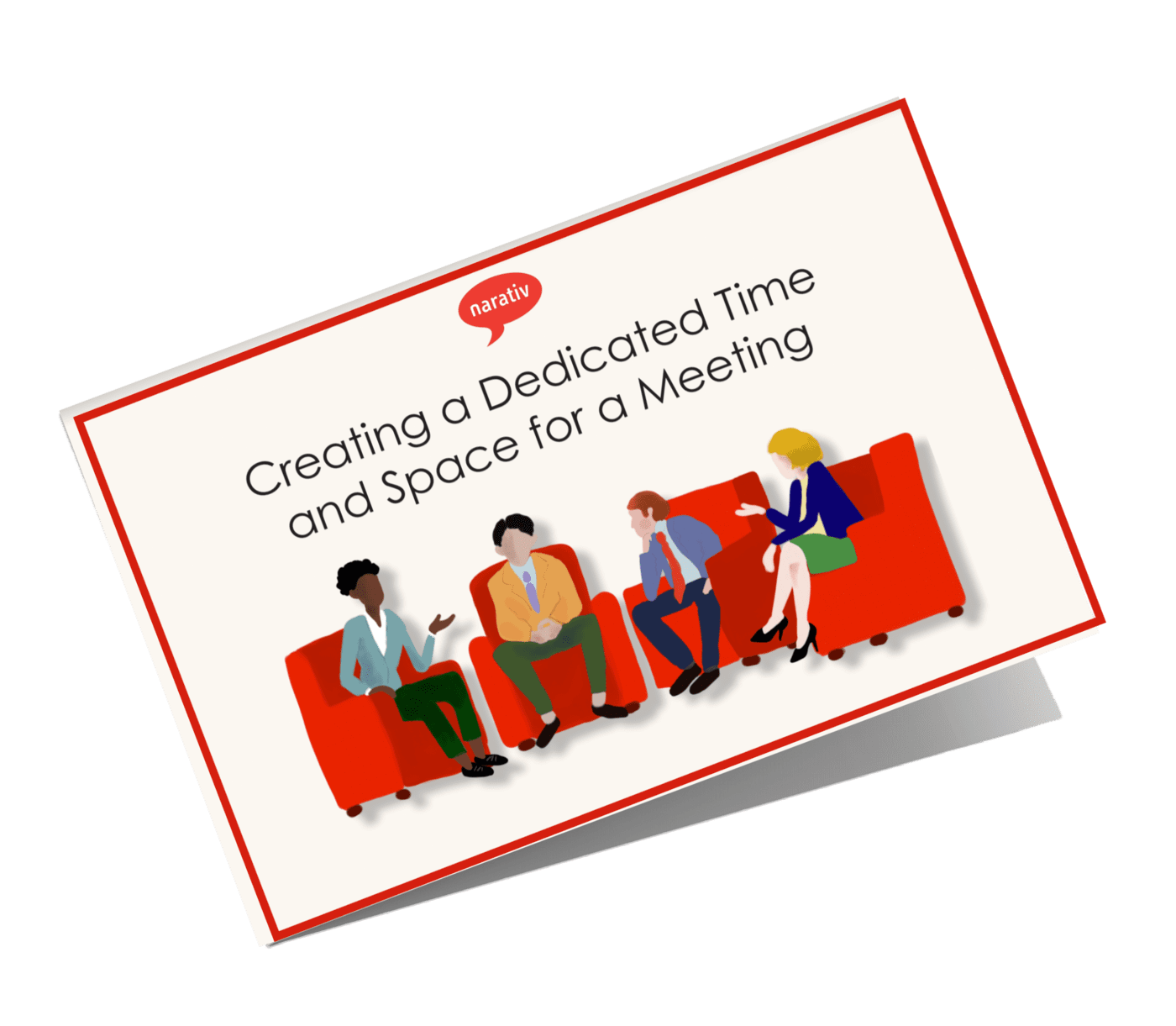Storytelling enhances training and learning content in a variety of unusual and effective ways. The challenge of measuring the ROI of its use, however, equals or exceeds the challenge of measuring training ROI in general. How do you measure a story? It’s almost like saying, “how do you measure a thought?” That would leave anyone stumped.
In this article we don’t pretend to have all the answers to that question nor do we offer the hard math of a cost-value analysis. But we will help you better understand the unique capacities of storytelling by lining them up against a standard set of training goals. Without being familiar with what distinguishes storytelling (and listening) as a communication modality, it’s difficult to identify its value. When you can pinpoint its benefits categorically, such as reduction of training time or prevention of mistakes, you lay the groundwork for doing the real cost-value analysis.
Known benefits of storytelling in business
Let’s begin with some widely-accepted benefits of storytelling in business.
1. Stories make information more engaging than technical writing, data, or charts do on their own.
2. In the process of capture (known also as excavation) stories can surface tacit or hidden information.
3. Stories are inherently part of culture-building and therefore serve a dual purpose.
4. Stories allow more people in the organization to have a voice, which increases a sense of ownership.
5. Stories ground listeners in the experience of others and thus serve a function like virtual mentoring.
6. Storytelling is inherently more human and creates a greater sense of connection.
With these capacities in mind, let’s take a look at the way storytelling serves training goals. Here are a specific set of goals that underlie the broader objectives of increasing productivity, enhancing knowledge and skills, and fostering a learning culture within the organization.
• save time
• reduce the learning curve
• avoid mistakes
• improve retention and prevent loss of information
• increase engagement and enjoyment
• portray your culture and instill certain core values
• increase connection between team members
Unique Aspects of Storytelling as a Training Tool
We will look at these goals from the two perspectives: storytelling as a tool to excavate and craft original, job-specific content into stories told by employees, managers or executives, and as a means to deliver that content. So, gathering and delivery of content are two areas that storytelling provides benefit.
Save Time
Most obviously, at the basic level, when contributors to learning content learn storytelling they gain a skill that grows in value over time. A performant story has three parts: first line, last line, and an emotional turning point. Like writing, storytelling requires practice to effectively sort out these parts and assemble them into an arc. Most often, people cannot identify what the emotional turning point is in a series of events, for example. When an expert listener is present at the training, that time is greatly reduced. With practice, the learner’s proficiency increases and the time it takes for him or her to generate valuable stories shortens. Employees proficient in storytelling skills can quickly shape events into an arc that communicates valuable information in an experiential manner. They also become adept at listening to stories of others and helping them to develop.
Measurable benefit: Storytelling according to a proven and exacting method produces high-quality stories that create emotional resonance and leave memorable imprints. Extra benefit: stories developed for training purposes can be used elsewhere in presentations, marketing, and internal communication.
Reduce the learning curve
At the level of brain function, it is widely understood that storytelling serves as a proxy for actual experience. Listening to a story is a form of learning that integrates information into the brain as if it were lived. This prepares new hires to handle on-the-job experiences with greater confidence and a sense of foreknowledge. Compared to the recall of bullet-points or abstract ideas on the spot, storytelling lays an entirely different foundation of actionable information.
Measurable benefit: Trainees report greater confidence in facing the unknown and the ability to easily refer to the memories the stories created once they are in the field.
Avoid and Learn from mistakes
To be candid about mistakes in business can be awkward, but it supports mistakes not being repeated. In fact, the literature shows that when mistakes are culturally acceptable in a business, the business grows and innovates. In addition to stories of field-experiences being a powerful way of portraying mistakes, a culture of listening and storytelling fosters a non-judgmental atmosphere. It shows that all stories are invited; in other words, failures make for good stories alongside successes. To hear top-level people tell stories about mistakes has a profound impact on a new hires’ comfort level on the job and their inspiration to be innovative as well. In essence, it’s “I’ve been here before, here were my mistakes, and you can learn from them.”
Measurable benefit: Candid storytelling lowers barriers between staff and management where a conversation about potential and actual mistakes can be incorporated into the learning culture of the organization.
Improve retention
Stories have the capacity to increase the memory of information 6 – 7x more than other modes of delivery. Stories contain inherently many of the elements that learning instructors are encouraged to use to improve retention. They combine the senses and emotions and present them in a familiar pattern of beginning, middle, and end, to which the brain is exceptionally receptive.
Measurable benefit: Stories are a simple, accessible, and natural way to increase recall, which saves on repetition and more closely associates learners with the information they are learning.
Increase engagement and enjoyment
There’s little debate over the ability of stories to dramatize and humanize information in a way that is both engaging and enjoyable. They have something for each type of learner – visual, auditory, experiential – so they are an economical way of serving different learning styles/biases, creating a memorable symbiosis with non-narrative instructional information.
Measurable benefit: Surveys of our training consistently revealed a highly positive response to the question of engagement and enjoyment of story-based training content.
Portray your culture and instill certain core values
In any culture, storytelling plays a central role in the evolution of ethics, traditions, and social knowledge. Just so for businesses. From the Founder’s Story to a future story to anecdotes about success and failure, stories distill core values, provide ethical direction, demonstrate processes, and open up the human dimension of an organization.
Measurable benefit: When new hires listen to and are encouraged to tell their own personal stories that relate to the organization’s mission, it provides a unique way of assimilating an organization’s culture.
Increase the connection between team members
Time and again we hear that listening to a colleague’s story made him or her “more human” in the eyes of others in the training. A resulting blush of enthusiasm for collaboration comes naturally. The impact of this enthusiasm may be the least easy to measure concretely, but it is the most well-known. It cuts through the perception of difference to reveal commonality across gender, race, ethnicity, and position.
Measurable benefit: In addition to enthusiasm and increased sense of working well as a team, getting to know people beyond roles and responsibilities can lead to behavioral changes in collaborative situations based on better understanding others’ working and learning styles.
Now let’s plug these capacities into a real-world example, the goals of Measures for Justice, who built a storytelling-based onboarding program with Narativ in 2017 and continue with a second iteration in late 2018.
Measures for Justice Case Example
Points 1 and 2 – Save Time / Reduce Learning Curve
It was standard onboarding practice at MFJ to have new employees shadow a person more experienced for up to 3 months in the field. As the company grew, this time-intensive and expensive practice became unsustainable. In addition, it weighed the lead trainer down. Why pay for travel and lodging of three people plus all the time invested and in some aspects lost when you could lay similar ground via storytelling? By collecting and sharing the stories of the Director of Data Outreach, new employees heard about specific situations that they were likely to encounter themselves. As a result, not only did the company reduce the onboarding process to just a week, but it also reduced the learning curve by half. Anecdotal comments from trainees spoke to increased confidence in their preparedness to go out into the field.
Point 3 – Avoid and Learn from Mistakes
The Director of Data Outreach told stories about mistakes that were particularly impactful on new employees. Not only did they humanize a director whose experience was seen as difficult to live up to, but they also demonstrated how to behave or which actions to take if faced with similar challenges. An added benefit was that new staff found her much more approachable, so much so that her team members felt a greater sense of permission to freely talk and discuss issues and challenges they encountered in the field that had not been covered in the trainer’s stories. As a result, the trainer received back better, more specific information from her team that she could address immediately in team meetings and one-on-one conversations.
Points 4 – 5 Improve Retention / increase Engagement and Enjoyment
“Previous onboarding programs in other companies felt canned, and, frankly, they were quite boring. This was engaging and fun to follow,” said one new employee. Everyone reported being engaged unlike any other onboarding process they’d been through. One factor was the personal quality of the stories told and shared. People enjoyed learning about Caroline Nobo Sarnoff, the Director of Outreach. They knew she was highly qualified and had achieved great results for the company. But they didn’t know about her background and how she’d come to form her ideas about criminal justice and why she had joined the company in the first place. They didn’t know that she’d made mistakes along the way and that she had arrived where she was by learning from others. The stories made the training enjoyable in the way that one might enjoy a good book or movie. Everyone wanted to know what was going to happen next.
Point 6 – Portray Your Culture and Instill Core Values
The stories new employees listened to in the modules gave them a sense of the culture of the organization, one in which people listened to each other and learned from one another. When MFJ decided in Year Two to translate their entire “message house” around identity and best practices into stories told by management and staff, this added another dimension to new staff’s training and spoke to the success of earlier storytelling in the training.
Point 7 – Increase Connection between Team Members
For MFJ, focusing on identifying, crafting, and sharing stories from the field for the purpose of training new hires led them to another unexpected benefit. Other teams, such as the marketing department, began to show an interest in this onboarding system so that they could learn more about their colleagues, and what their experiences were like. They also gave them compelling content that could be repurposed for presentations, pitches and other functions of the organization. The more the stories were shared, the more people were connected across the organization, breaking down the silos that naturally form in a high-growth environment.
Conclusion
Use surveys to measure storytelling ROI
Each of the measurable benefits we highlighted can be translated into survey questions. Surveys provide comprehensive qualitative data about the impact of storytelling when the questions are focused on the strengths mentioned above. We routinely use pre and post-surveys to look at feelings about the benefit of the training and then ask questions that yield more objective assessments about competencies learned or improved, time saved, relationship-building and so forth. We recommend a 90+ day survey that looks specifically at the implementation of the learning in the field over time, which can shed light on the unique ways an organization’s employees are learning from and using storytelling skills.
Doing the Math
With these elements as guidelines, it will be easier to track and calculate the ROI of your next investment in storytelling for training. For MFJ, there was no doubt that storytelling saved time and money.
Do also anticipate the value of stories to ripple throughout your organization as they become part of the culture, are shared, provoke similar or hidden information to be revealed, and contribute to a sense of ownership and pride in the mission.
In that sense, we’ve gone quite far in measuring a story.
Share on facebook
Facebook
Share on twitter
Twitter
Share on linkedin
LinkedIn



